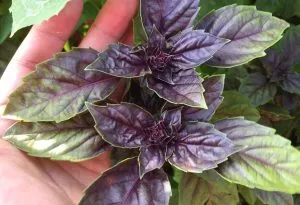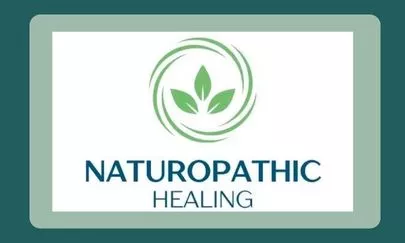Does basil have medicinal properties? Yes, it does! And this article summarizes the purple basil plant benefits and its uses. So, what benefits does purple basil have? Let’s see the 10 Benefits of Purple Basil.
We all know all too well the cultivation and the aromatic and culinary properties of basil (Ocimum basilicum). However, in this case we find a variant, family of this aromatic that offers compounds somewhat different from those of the best known plant.
We talk about the purple basil (Ocimum sanctum), or as it is also known, holy basil. Let’s know some of its particularities, see how it is grown and the medicinal properties researched to get the most out of this medicinal herb.
Table of Contents
Purple basil cultivation
Climatology
The holy basil It is an herb accustomed to warm environments, with temperatures ranging between 15 ºC and 35 ºC. As its leaves are very sensitive, you have to be careful with untimely frosts, or with leaving it on the balcony on cold nights.
Therefore, as advice, if we want it multiply from seed, we must sow it from March, when we say goodbye to nights below zero in many areas of Spain.
It loves luminosity and is a plant very grateful to the light and in the heat of the Sun. It can coexist in semi-shaded areas (only shade in the morning or in the afternoon), although it will have to be removed from the direct sun in the strongest summer months.
Soil and water
Withstands periods of drought well, although you will notice it when the tip of its leaves dries and the green color does not have such a luminous and youthful appearance. It is convenient to water 1 time a week in the cold months of spring and 2 or 3 times in summer.
Adapts to all types of floors, regardless of whether they are clayey, silty or sandy. It prefers environments with good drainage and no flooding.
If you grow black basil in a pot, be careful not to store the water on the plate, as it causes Phythopthora in the plant, a practically irreversible disease.
Multiplication
For seeds that we can collect ourselves (later you can watch a video). Easy germination and little difficulty in both planting and conservation (up to 4 years).
Pests and diseases
Be very careful with the Whitefly, the quintessential plague of basil. It settles on the underside of the leaf and you will notice it when you shake the stems, since this tiny white insect flies out, to perch again after a few seconds.
Foliar treatments with potassium soap, hydrogen peroxide (2 cc/L) or detergent (1.5-2 cc/L) every 3-5 days will keep the pest at bay in the most active months.
Phytochemical components of holy basil
- Eugenol (1-hydroxy-2-methoxy-4-allylbenzene)
- Euginal (eugenic acid)
- Urosolic acid
- Carvacrol
- Linalool
- Limatrol
- Caryophyllene
- Methyl carvicol
In addition, it has other nutritional components such as vitamin A, C, calcium, zinc, iron and other phytonutrients.
For every 100 grams of fresh purple basil extract:
- Protein: 30 Kcal, 4.2 g
- Fat: 0.5 g
- Carbohydrates 2.3 g
- Calcium: 25 mg
- Phosphorus 287 mg
- Iron: 15.1 mg
- Vitamin C: 25 mg per 100 g.
- Daily Herbal Stress Support: Himalaya Holy Basil provides daily support to help you deal with stress.* Promotes tranquility and relaxation and helps you stay rested and relaxed.*
Medicinal properties of purple basil (Ocimum sanctum)
1. Antidiabetic potential
Like other plants, purple basil has a regulating effect on the amount of sugar in the blood, lowering glucose levels, glycosylated hemoglobin and urea with an increase in glycogen, hemoglobin and protein.
In addition, various phytochemicals present in Ocimum sanctum have stimulating effects on the physiological pathways of insulin secretion, which may be the basis of your antidiabetic action.
The greatest results have been Shown vs. serum glucose. However, this research has not established that basil can have a significant effect on the hyperinsulinemia.
Check the list of medicinal plants for diabetes.
2. Improves cardiac activity
Regular taking of holy basil infusions reduces chronic resistant stress and strengthens the cardiovascular system.
This was proven in several investigations where several combinations of this medicinal herb significantly reduced the probability of suffering a myocardial infarction based on decreasing the levels of glutathione (GSH) and myocardial superoxide dismutase and LDH.
In this study, it was observed that O. sanctum L. at the dose of 50 mg/kg demonstrated a maximum cardioprotective effect.
3. Healing
The ethanolic extract of this medicinal herb facilitates wound healing and offers greater mechanical strength before closing.
Like other plants, such as rosehip, it facilitates epithelialization and wound contraction.
4. Antioxidant action
Many medicinal plants offer a high amount of bioactive compounds and vitamins that improve the health of the recipient organism.
The essential oils contain elements that reduce free radicals formed by negative diets, alcohol and tobacco.
The aqueous extract of the purple basil significantly increased levels of antioxidant enzymes (superoxide dismutase, catalase, etc.)
Oral feeding also provides important protection of aortic tissue and outflow from peroxidative damage induced by hypercholesterolemia.
5. Lowers cholesterol
Phytochemicals that have been studied to lower cholesterol fixed in the body are based on seed oil extracts.
The application of 0.8 grams/kg of body weight for 1 month in rabbits stuffed with fat (100 mg/kg weight of cholesterol) decreases the levels of triacylgileroles, LDL cholesterol and VLDL and serum cholesterol
Likewise, scientific research has also proven the anti-cholesterol power of leaf extracts, significantly reducing lipid levels (serum cholesterol, triglycerides, phospholipids and LDL cholesterol), significantly increasing HDL cholesterol values.
You can find many medicinal plants of everyday use, like cilantro, which have effects similar to that of purple basil.

6. Antiseptic
Different medicinal plants they have been used successfully against the development of bacteria and fungi in humans.
In fact, many extracts, such as purple basil, are used in agriculture to apply foliar on plants, strengthen their natural defenses (phytoalexins) and reduce the mobility of sucking insects.
In fact, linoleic acid present in O. Sanctum has a high antibacterial activity. It has a remarkable effect against Staphylococcus aureus, Bacillus pumius and Pseudomonas aeruginosa.
Singh et al in their study they suggested that a higher content of linoleic acid in the fixed oil of O. sanctum L. could contribute to its antibacterial activity.
The oil shows good antibacterial activity against Staphylococcus aureus, Bacillus pumius and Pseudomonas aeruginosa where S. aureus it was the most sensitive organism.
7. Gastric protector
When using an extract from purple basil (for example through an infusion), with a concentration of 50 to 200 mg / kg, 2 times a day, offers a protective effect of the ulcer, reducing in a high percentage problems of gastric ulcers (caused by pyloric ligation).
In addition, it inhibits the secretion of acid pepsin, which affects the normal development of the stomach, and increases gastric mucus (mucin secretion), protecting the stomach with greater intensity.
In this way, it is concluded that the extract of holy basil has anti-ulcer properties, reducing acid secretion and protecting the stomach with mucin formation.
8. Immunostimulant effect of holy basil
Recent research has brought to light that aqueous extract of purple basil reduces the total bacterial count and increases neutrophil and lymphocyte counts with improved phagocytic activity.
This means that the immune system increases its potential to detect and eliminate aggressive elements based on bacterial growths that can affect the body.
Likewise, phytochemical components are extracted from basil seed oil that activate antibodies and reduce the chances of bacterial infection.
9. Anti-inflammatory action
Of all the phytochemical compounds collected in purple basil, those related to Eugenol, rosavinic acid, Apigenin and Civsilineol have anti-inflammatory activity, reducing cyclooxygenase.
Among all of them, it is the Eugenol the one who is older anti-inflammatory potential offers, reducing by 97% the activity of cyclooxygenase-1 to a concentration of 1000 μM.
This pontecial against inflammation is compared with current drugs based on ibuprofen, naproxen and aspirin.
Similarly, antipyretic activity of the concentrate of O. Sanctum in methanol, although in this case the duration of its effect was shorter than the comparison with 300 mg/kg of sodium salicylate.
10. Reduction of cancer cells
Fresh holy basil leaf paste contains chemopreventive phytochemical compounds, against skin and external tumors.
The incidence of papillomas and squamous cell carcinomas was significantly reduced and the survival rate in topically applied leaf paste increased.
The purple basil blocks or suppresses events associated with chemical carcinogenesis by inhibiting the metabolic activation of the carcinogen.
How to get basil seeds
Below we leave you a very interesting video that perfectly describes how the seeds of basil are extracted, once the stems begin to dry.
Very easy and simple. We will have these seeds available to use as a medicinal remedy (purple basil seed oil) or to produce new plants.
- Beautiful - Full color packet of the popular culinary herb Opal Basil (Ocimum Basilicum). This carefully selected variety can easily be grown indoors in your kitchen or outdoors in the garden. There is actually enough seed to do both. Minimum of 400 mg per packet (about 330 seeds).
- Productive - Opal basil germinates in 5-10 days when soil temps are 65-70°F. Plant 1/4” deep and space 8-12” apart in an area with full sun. This variety will grow 18-24” tall with a spread of 20-24" . This variety will mature in 65-80 days, but you can begin to harvest when your plant has 3 or 4 sets of leaves. Plant in USDA Zones 9-12.
- Fresh Basil On Hand - Imagine fresh basil for your bruschetta, pesto sauce, or homemade pizza. Growing your own herb garden is a great way to make your food look, smell, and taste gourmet.
Contraindications and side effects of holy basil
In all scientific tests carried out with Ocimum sanctum it has been detected that in the long term, it can negatively affect fertility but in a reversible way.
This is due to the benzene extract contained in the leaves of the purple basil, which reduced within 50 days the total sperm count, sperm motility, and rate of advance. There are no allergic adverse reactions or dermatitis detected. Even so, safety in pregnant people, breastfeeding, and children have not been investigated with certainty.
We hope you find this article about the Benefits of Purple Basil useful.
You may be interested in our article about Design your medicinal plant garden



